SNVSAV2B January 2018 – November 2019 TLV6700
PRODUCTION DATA.
- 1 Features
- 2 Applications
- 3 Description
- 4 Revision History
- 5 Device Comparison Table
- 6 Pin Configuration and Functions
- 7 Specifications
- 8 Detailed Description
- 9 Application and Implementation
- 10Power Supply Recommendations
- 11Layout
- 12Device and Documentation Support
- 13Mechanical, Packaging, and Orderable Information
Package Options
Mechanical Data (Package|Pins)
Thermal pad, mechanical data (Package|Pins)
Orderable Information
7.8 Typical Characteristics
at TJ = 25°C and VDD = 5 V (unless otherwise noted)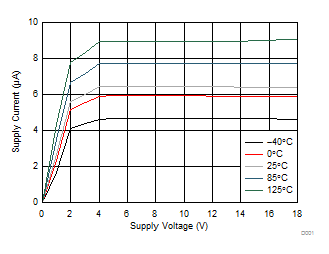
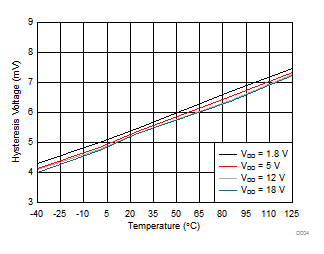
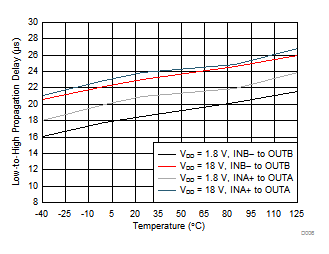
(Low-to-High Transition at the Inputs)
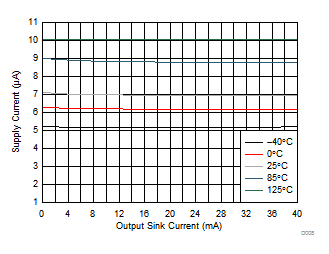
Output Sink Current
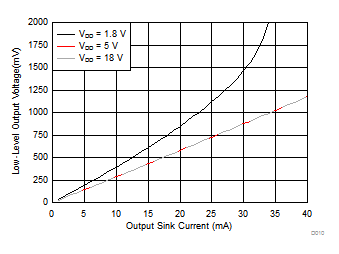
Output Sink Current (0°C)
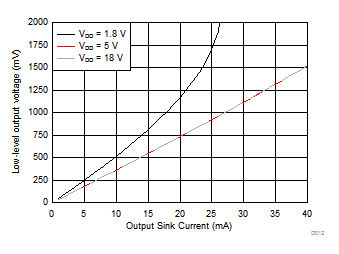
Output Sink Current (85°C)
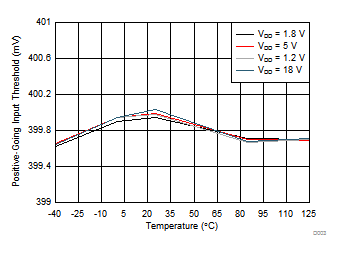
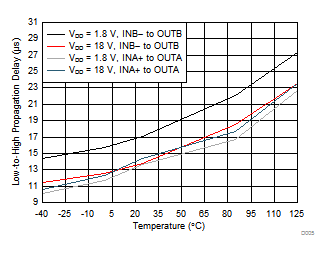
(High-to-Low Transition at the Inputs)
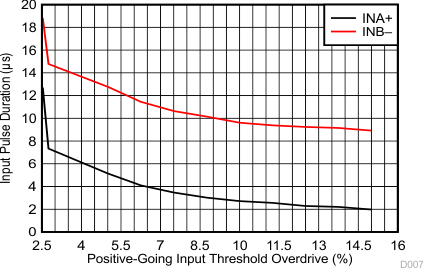
| INA+ = negative spike below VIT– | ||
| INB– = positive spike above VIT+ |
Threshold Overdrive Voltage
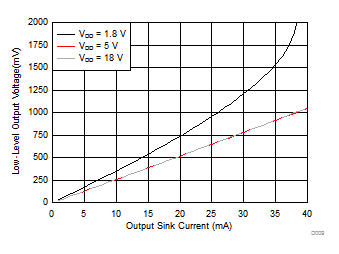
Output Sink Current (–40°C)
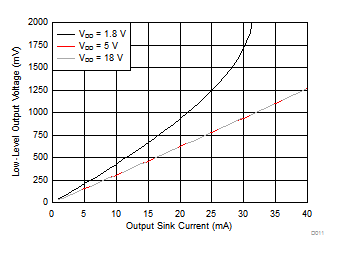
Output Sink Current (25°C)
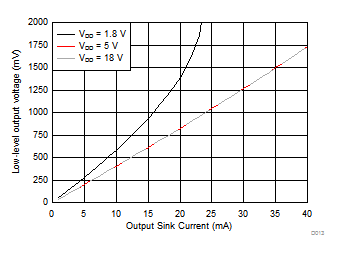
Output Sink Current (125°C)